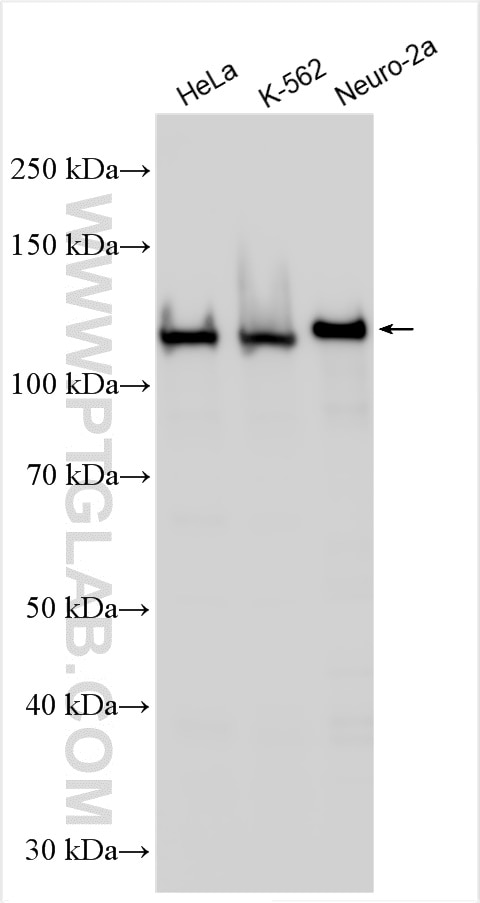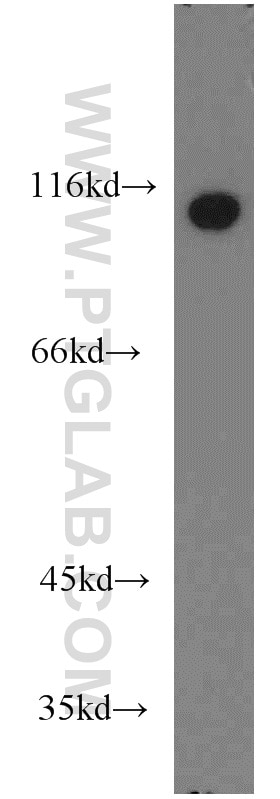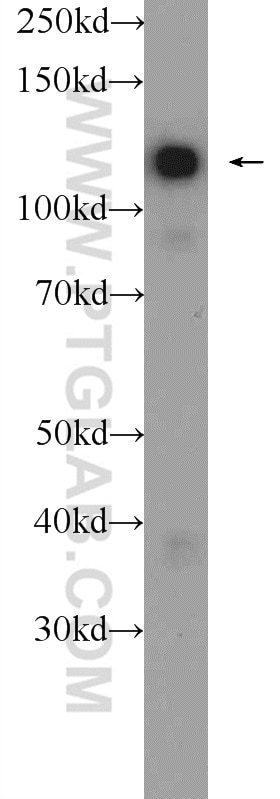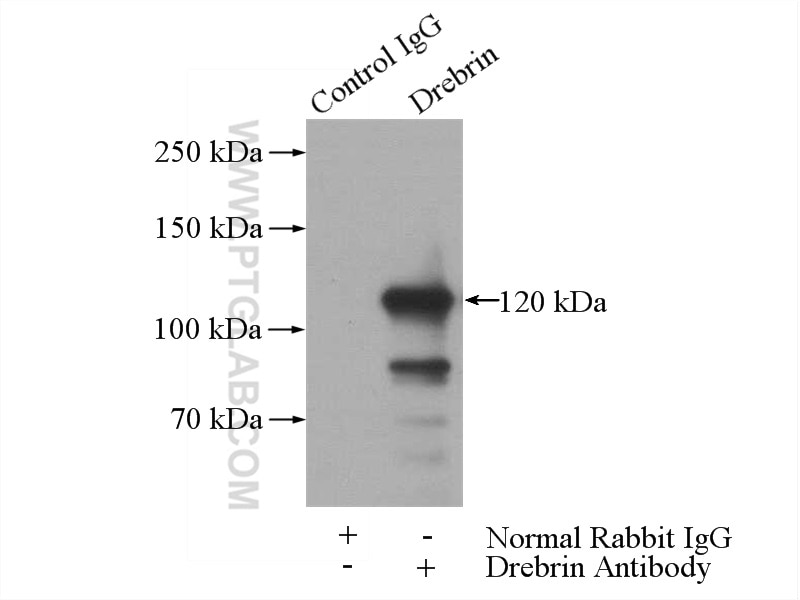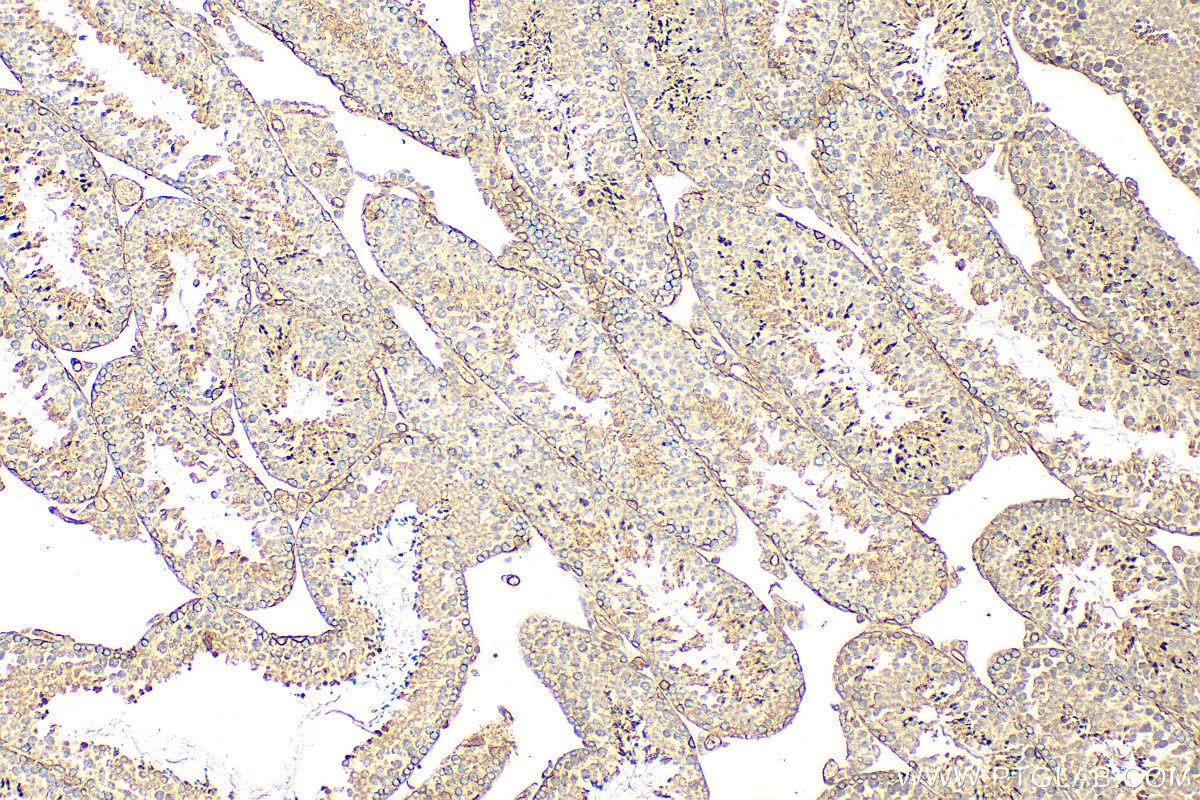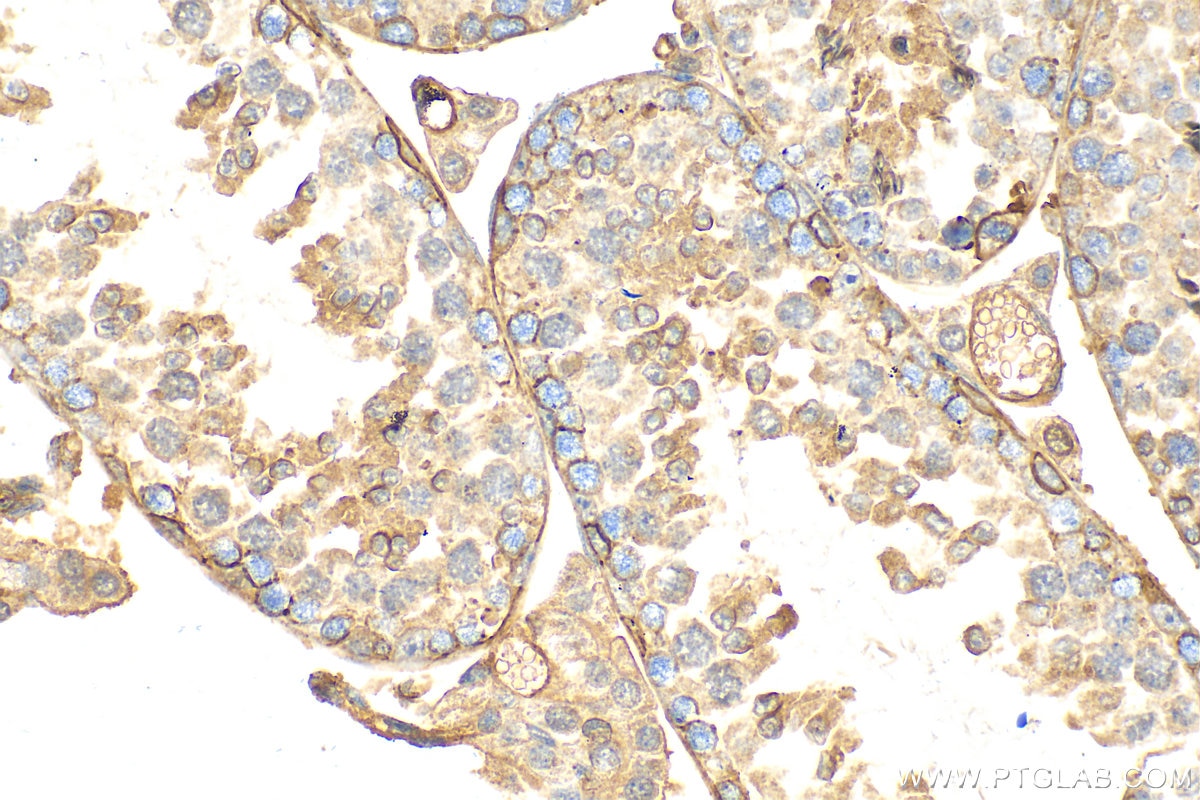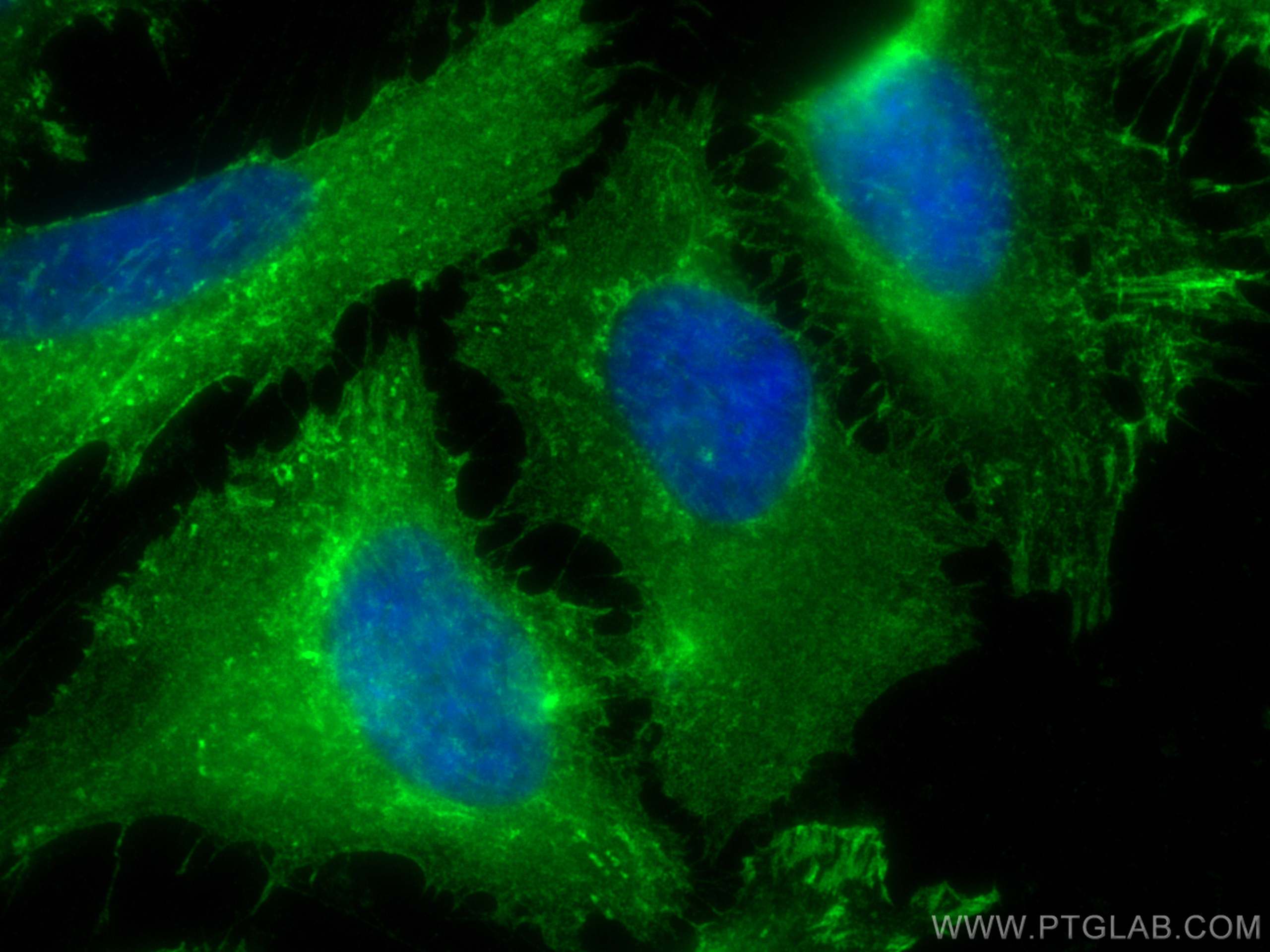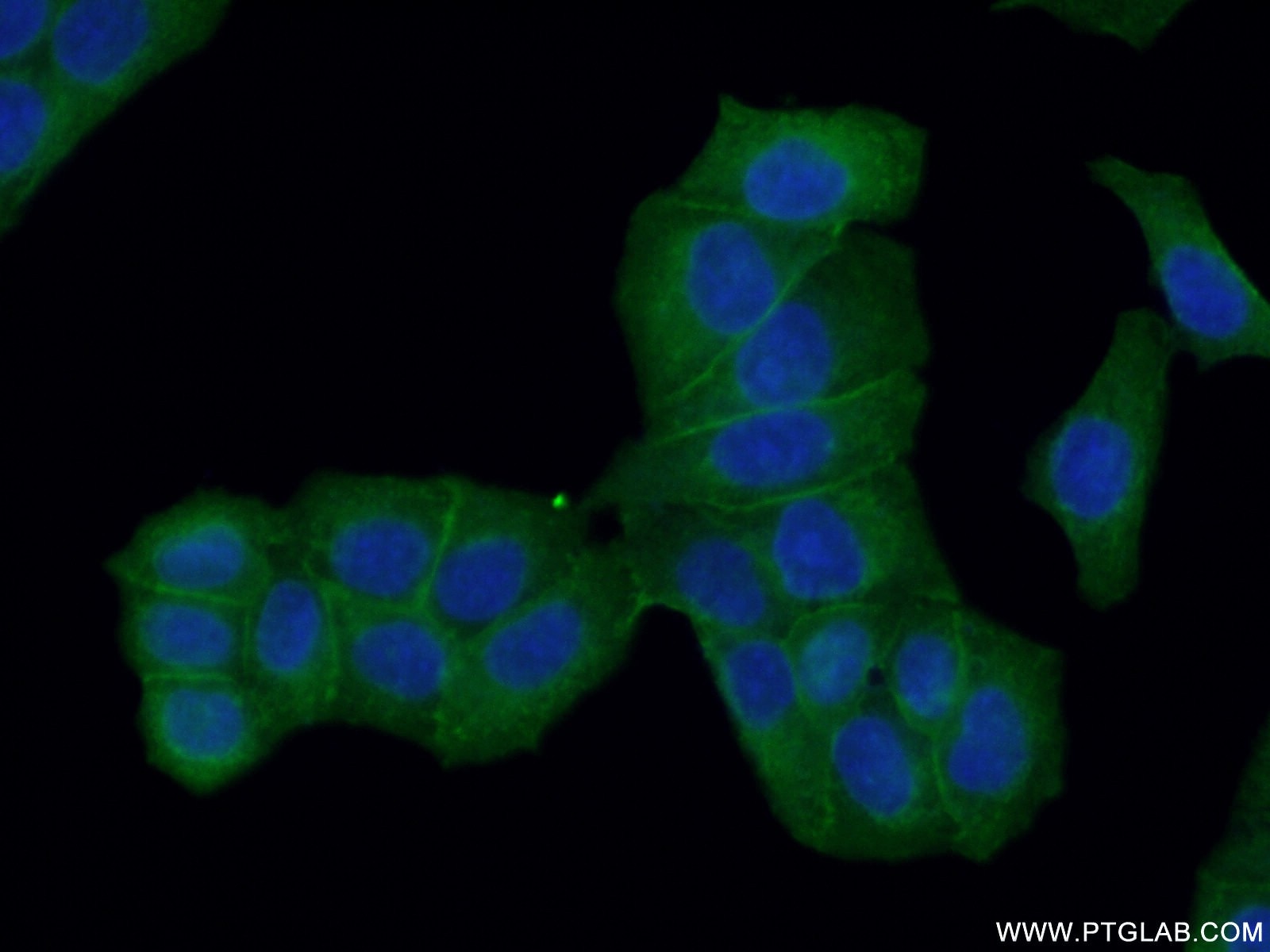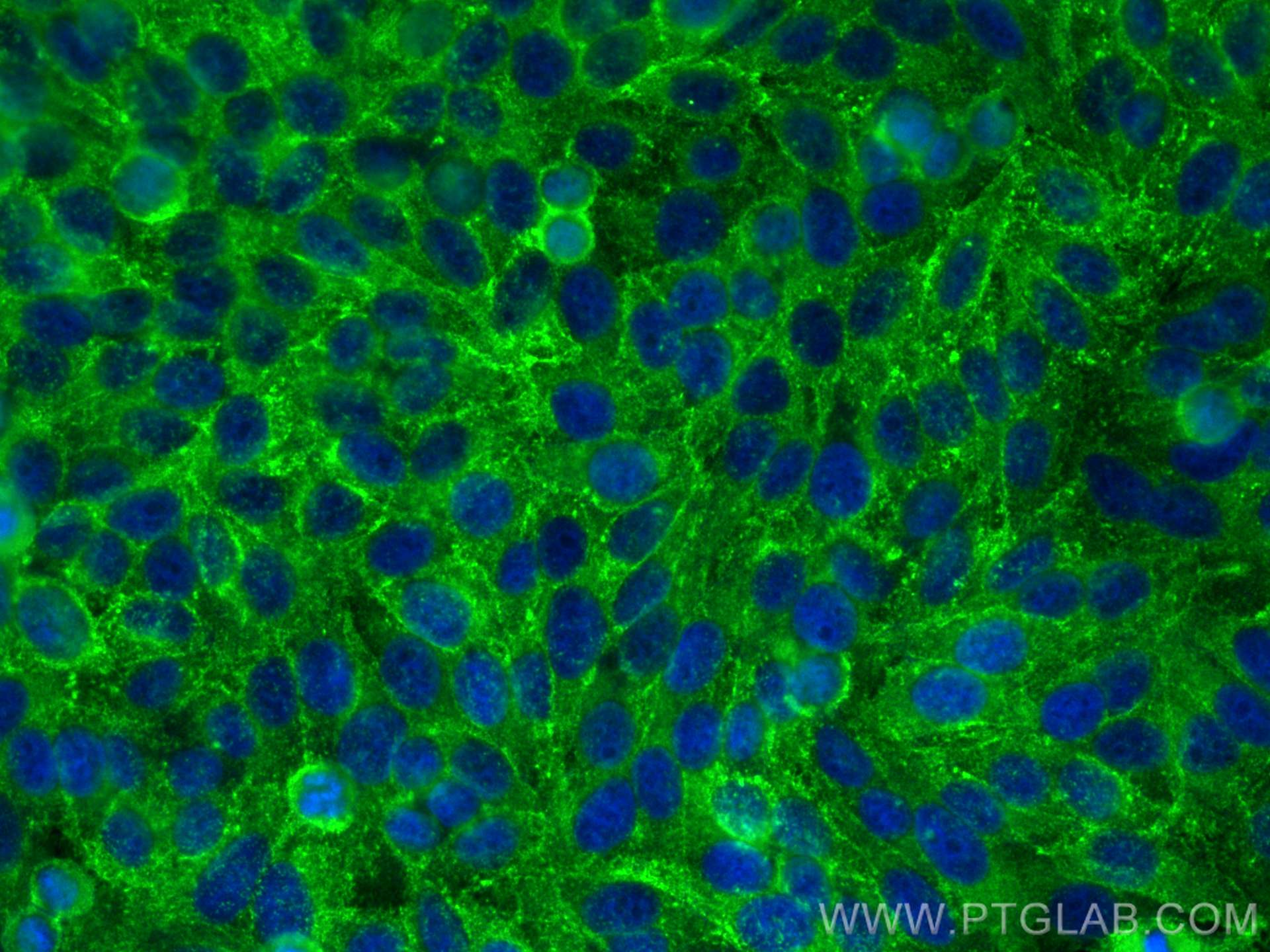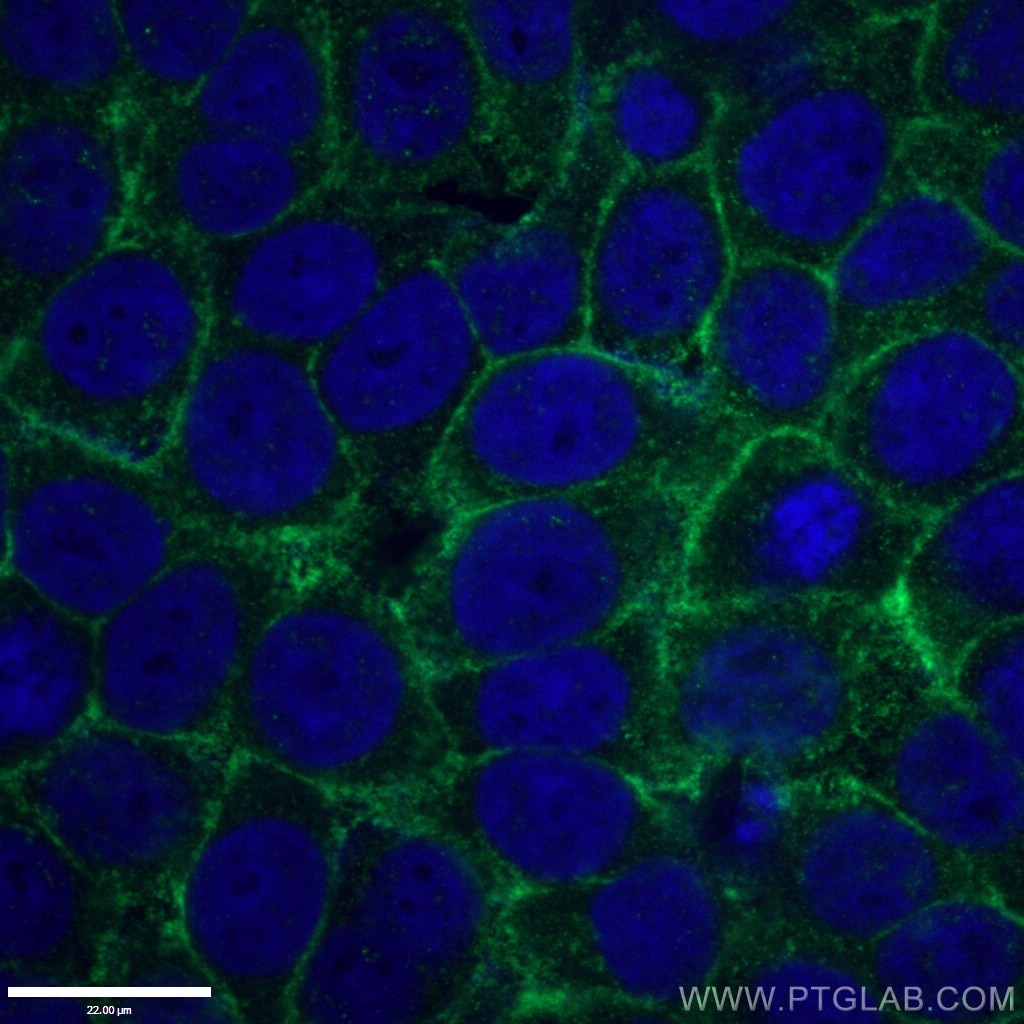Anticorps Polyclonal de lapin anti-Drebrin
Drebrin Polyclonal Antibody for WB, IP, IF, IHC, ELISA
Hôte / Isotype
Lapin / IgG
Réactivité testée
Humain, souris et plus (1)
Applications
WB, IHC, IF/ICC, IP, ELISA
Conjugaison
Non conjugué
N° de cat : 10260-1-AP
Synonymes
Galerie de données de validation
Applications testées
| Résultats positifs en WB | cellules HeLa, cellules K-562, cellules Neuro-2a |
| Résultats positifs en IP | cellules K-562 |
| Résultats positifs en IHC | tissu testiculaire de souris, il est suggéré de démasquer l'antigène avec un tampon de TE buffer pH 9.0; (*) À défaut, 'le démasquage de l'antigène peut être 'effectué avec un tampon citrate pH 6,0. |
| Résultats positifs en IF/ICC | cellules HeLa, cellules HepG2 |
Dilution recommandée
| Application | Dilution |
|---|---|
| Western Blot (WB) | WB : 1:5000-1:50000 |
| Immunoprécipitation (IP) | IP : 0.5-4.0 ug for 1.0-3.0 mg of total protein lysate |
| Immunohistochimie (IHC) | IHC : 1:50-1:500 |
| Immunofluorescence (IF)/ICC | IF/ICC : 1:500-1:2000 |
| It is recommended that this reagent should be titrated in each testing system to obtain optimal results. | |
| Sample-dependent, check data in validation data gallery | |
Applications publiées
| WB | See 15 publications below |
| IHC | See 4 publications below |
| IF | See 3 publications below |
| IP | See 1 publications below |
Informations sur le produit
10260-1-AP cible Drebrin dans les applications de WB, IHC, IF/ICC, IP, ELISA et montre une réactivité avec des échantillons Humain, souris
| Réactivité | Humain, souris |
| Réactivité citée | rat, Humain, souris |
| Hôte / Isotype | Lapin / IgG |
| Clonalité | Polyclonal |
| Type | Anticorps |
| Immunogène | Drebrin Protéine recombinante Ag0371 |
| Nom complet | drebrin 1 |
| Masse moléculaire calculée | 71 kDa |
| Poids moléculaire observé | 100-130 kDa |
| Numéro d’acquisition GenBank | BC000283 |
| Symbole du gène | Drebrin |
| Identification du gène (NCBI) | 1627 |
| Conjugaison | Non conjugué |
| Forme | Liquide |
| Méthode de purification | Purification par affinité contre l'antigène |
| Tampon de stockage | PBS avec azoture de sodium à 0,02 % et glycérol à 50 % pH 7,3 |
| Conditions de stockage | Stocker à -20°C. Stable pendant un an après l'expédition. L'aliquotage n'est pas nécessaire pour le stockage à -20oC Les 20ul contiennent 0,1% de BSA. |
Informations générales
Drebrin (DBN1) is an actin binding and stabilizing protein with roles in endocytosis, formation of dendrite spines in neurons and coordinating cell-cell synapses in immune cells. Preferentially expressed in the brain, it is highly localized in dendritic spines and regulates spine shapes. It has two isoforms that are splice variants, with drebrin A being expressed in neural cells, and drebrin E is present in several other cell types. Recently it has been reported that circulating DBN1 levels correlated with retinal nerve fiber layer defect and may reflect the severity of retinal ganglion cells injury in glaucoma patients.
Protocole
| Product Specific Protocols | |
|---|---|
| WB protocol for Drebrin antibody 10260-1-AP | Download protocol |
| IHC protocol for Drebrin antibody 10260-1-AP | Download protocol |
| IF protocol for Drebrin antibody 10260-1-AP | Download protocol |
| IP protocol for Drebrin antibody 10260-1-AP | Download protocol |
| Standard Protocols | |
|---|---|
| Click here to view our Standard Protocols |
Publications
| Species | Application | Title |
|---|---|---|
Int J Mol Sci Drebrin Regulates Acetylcholine Receptor Clustering and Organization of Microtubules at the Postsynaptic Machinery | ||
Mol Neurobiol L-3-n-Butylphthalide improves synaptic and dendritic spine plasticity and ameliorates neurite pathology in Alzheimer's disease mouse model and cultured hippocampal neurons. | ||
Toxicol In Vitro Bisphenol-A exposure induced neurotoxicity and associated with synapse and cytoskeleton in Neuro-2a cells. | ||
Environ Sci Pollut Res Int Acute lead acetate induces neurotoxicity through decreased synaptic plasticity-related protein expression and disordered dendritic formation in nerve cells. | ||
Gene Intron retention is a stress response in sensor genes and is restored by Japanese herbal medicines: A basis for future clinical applications. |
